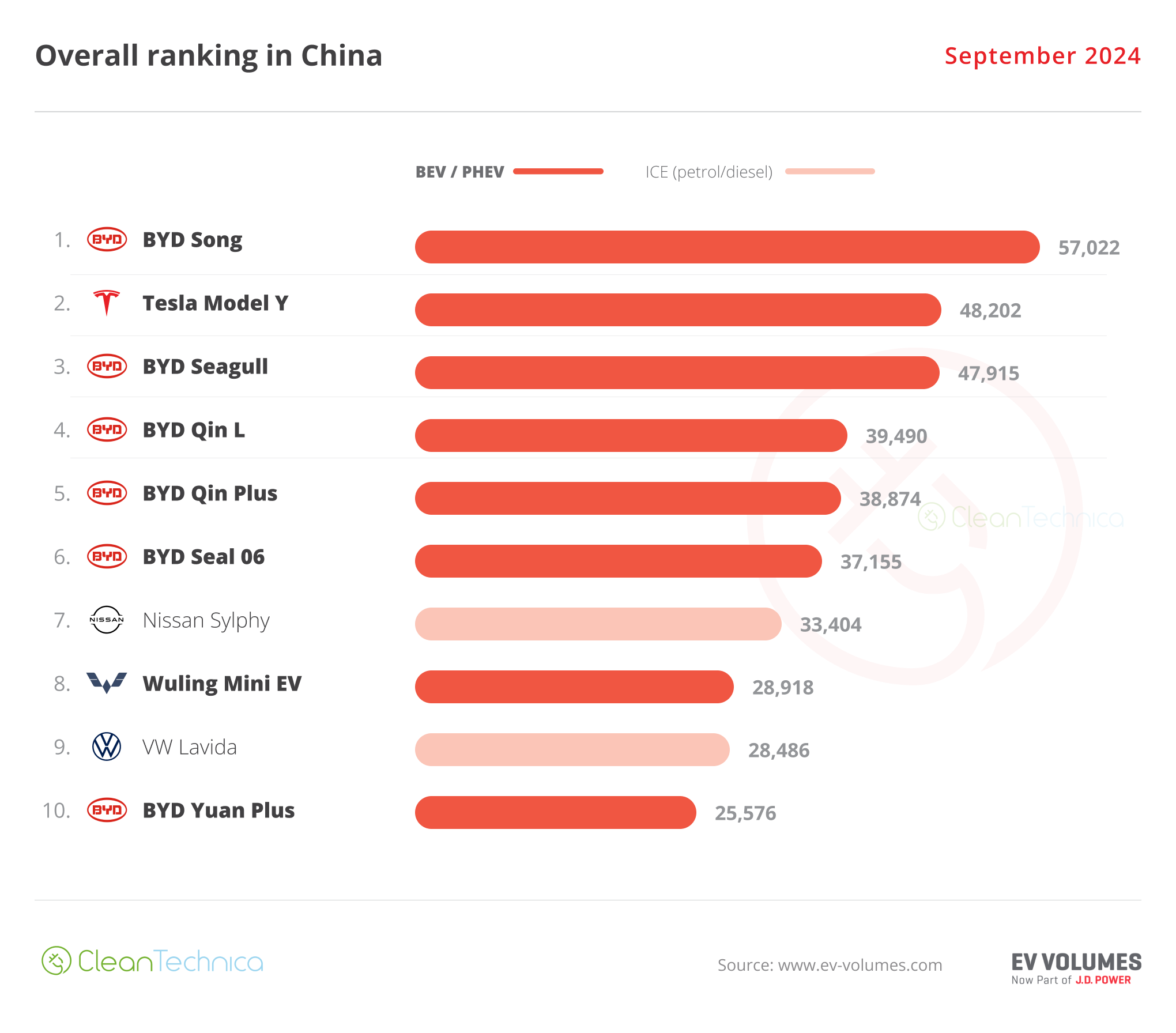Sign up for daily news updates from CleanTechnica on email. Or follow us on Google News!
Zero emission fuel cell trucks have emerged as big winners in the new Clean Energy Hydrogen Hubs competition, a $7 billion Energy Department program aimed at ramping up H2 production across the US. Currently about 95% of hydrogen produced in the US comes from natural gas, and the main thrust of the program is to push down the cost of alternative sources. So, what will gas stakeholders do when they get pushed out of the way? Spoiler alert: ExxonMobil has a plan for that.
More Green Hydrogen For Fuel Cell Trucks
The Hydrogen Hubs competition first crossed the CleanTechnica radar in September of 2022, when it launched with the aim of leveraging renewable energy and other regional resources to drive down costs and decarbonize hard-to-abate industries.
That includes the long haul trucking part of the transportation industry. Battery-powered electric trucks have begun to replace diesel fuel in recent years. However, some trucking stakeholders prefer an electrification solution that takes less time than recharging batteries. Grid planners are also concerned about accommodating enough new charging infrastructure to absorb a full turnover to battery-powered trucks.
Attention has focused on hydrogen fuel cell electric trucks because they can fuel up with hydrogen in about the same amount of time as pumping diesel into a fuel tank, and they don’t depend on electricity from the grid or off-grid sources. As applied to Class 8 trucks, fuel cells also have the potential to provide for longer range while weighing less and taking up less space than the equivalent in battery packs.
Battery power has a long head start in the transportation field, but fuel cells appear to be catching up in the heavy duty, long haul trucking sector (see more CleanTechnica coverage here).
With that in mind, it’s no surprise to see the Energy Department tapping two hotspots for transportation and fuel cell truck innovation — California and Texas — to fill two of the seven slots among the winning Hydrogen Hub competitors announced Friday morning.
California’s winning ARCHES project will not make natural gas stakeholders very happy. Instead of sourcing hydrogen from natural gas, ARCHES will focus exclusively on biomass sources and green hydrogen pushed from water by electrolysis systems, to be powered with renewable energy.
If all goes according to plan, fuel cell truck stakeholders in California will be able to make their case for zero emission transportation without the burden of natural gas sourcing.
Other sustainability-minded stakeholders along the Pacific coast transportation corridor also stand to benefit from the PNW project, which hooks up Washington, Oregon, and Montana. The Energy Department tapped PNW for a Hydrogen Hub award devoted exclusively to water electrolysis. Though Montana may seem odd state out in this endeavor, its copious wind energy potential will presumably be in play.
Another winning project to help decarbonize long haul trucking is MachH2, a multi-state collaboration that covers Illinois, Indiana, and Michigan. As the name suggests, transportation fuels are the main focus of the MachH2 group, though its interest also extends into other industries.
“Located in a key U.S. industrial and transportation corridor, the Midwest Hydrogen Hub will enable decarbonization through strategic hydrogen uses including steel and glass production, power generation, refining, heavy-duty transportation, and sustainable aviation fuel,” the Energy Department explains.
Phooey On You, Natural Gas
The Mach2 project includes natural gas as well as green hydrogen and other alternative sources. The same goes for the HyVelocity project in Texas, which focused on both electrolysis and natural gas for its winning Hydrogen Hub proposal.
The natural gas angle has given rise to some sharp criticism of the Energy Department. However, the rightful target of ire is the 2021 Bipartisan Infrastructure Law, which included carveouts for natural gas in general and the Hydrogen Hub program in particular.
Still, the Energy Department tapped only one of the seven winning projects to focus exclusively on natural gas. That would be the ARCH2 proposal hooking up Ohio, Pennsylvania, and West Virginia region in support of new natural gas infrastructure including new pipelines and carbon sequestration facilities.
Fuel Cell Trucks, Start Your Engines
Brace yourself for pushback from the concerned citizens and environmental organizations of Ohio, Pennsylvania, and West Virginia.
Meanwhile, fuel cell truck makers already have indicated their willingness to push the market for green hydrogen, and the Energy Department’s SuperTruck 3 initiative has already begun building momentum among legacy stakeholders, including Bosch, Ford, GM, and Daimler North America, among others.
One of the best known names in the US fuel cell truck field is the startup Nikola, which is still on the road to recovery after a series of delays and a run-in with the Securities and Exchange Commission. Nikola was eyeballing green hydrogen from the beginning when it launched in 2014. Currently the company is planning a raft of hydrogen fuel stations in California and elsewhere, including a mobile fuel station that brings the H2 where it’s needed (see more Nikola news from CleanTechnica here).
In recent months the company has also attracted the attention of Bosch, the US Postal Service, and Plug Power, among others. The Plug Power angle is especially important because it will help accelerate Nikola’s plans for fueling its trucks with green hydrogen.
Plug Power is planning to bring its electrolyzer technology to Texas, so stay tuned for more on that.
Another interesting stakeholder to pop up in Texas is Hyzon, which recently tested a liquid hydrogen version of its fuel truck on Texas roadways.
What’s Up With Quantron?
Look for the German truck maker Quantron to also dip a toe in US waters. The company raised an eyebrow or two last week, when the iconic home furnishings company IKEA announced that it was putting five Quantron fuel cell trucks on the road in Austria with the aim of demonstrating longer range outside of its current fleet of battery-electric trucks.
“Quantron fuel cell trucks who?” was the general theme of the response, to put it kindly.
However, high level partnerships are common in the automotive industry, including those in which startups hook up with legacy stakeholders. Quantron developed its new fuel cell trucks with the longstanding Canadian firm Ballard Power Systems, which has its fingerprints all over the fuel cell mobility industry.
Quantron has already laid the groundwork to introduce its hydrogen fuel-as-a-service model in the US, and green hydrogen is in play. In September, Quantron used the occasion of the 2023 Move America conference in Austin, Texas to announce a partnership with the US green hydrogen supplier New Day.
Speaking of Texas, on October 11 — just two days before the Energy Department announced the Hydrogen Hub winners — ExxonMobil announced that it is putting up almost $60 billion to effectively double its shale gas footprint in the low-cost fields of the Permian Basin.
What did they know, and when did they know it? The new investment gives ExxonMobil a shot at profiting on the coattails of the Hydrogen Hubs program, but they’ll have to compete against fast-rising activity in the green hydrogen field.
Don’t cry for ExxonMobil, though. Assuming that the global demand for petrochemicals keeps growing, they’ll always have Baytown.
Where’s Congress?
Of course, no story about decarbonizing the all important US trucking industry would be complete without a mention of Republican leadership in Congress, or lack thereof.
Congress has important business to attend to in Israel, Ukraine, and elsewhere around the world, and here at home, but the Republican-led House of Representatives has chosen to pull the rug out from under its own ability to conduct any business at all, whatsoever, anywhere.
That’s not particularly shocking. After all, it wasn’t too long ago that 139 Republican members of the House voted in support of a scheme to overturn the 2020 elections in favor of the losing Republican candidate, Donald Trump.
By refusing to conduct normal business under Democratic President Joe Biden, House Republicans are pretty much accomplishing the same thing, only without the help of a violent mob of white supremacists.
Meanwhile, over in the US Senate, Republican Senator Tommy Tuberville of Alabama has been holding up hundreds of military promotions, while Republican Senators Rand Paul (Kentucky), JD Vance (Ohio), and Ted Cruz (Texas) have similarly shut down key State Department appointments.
It’s yet another indication of the outsized influence that Trump continues to wield in Congress, on people who should know better, but choose not to.
If you have any thoughts about that, drop us a note in the comment thread.
Follow me @tinamcasey on Bluesky, Threads, Post, LinkedIn, and Spoutible.
Photo: Fuel cell trucks at hydrogen fuel station courtesy of Quantron.
Have a tip for CleanTechnica? Want to advertise? Want to suggest a guest for our CleanTech Talk podcast? Contact us here.
EV Obsession Daily!
I don’t like paywalls. You don’t like paywalls. Who likes paywalls? Here at CleanTechnica, we implemented a limited paywall for a while, but it always felt wrong — and it was always tough to decide what we should put behind there. In theory, your most exclusive and best content goes behind a paywall. But then fewer people read it!! So, we’ve decided to completely nix paywalls here at CleanTechnica. But…
Thank you!
Tesla Sales in 2023, 2024, and 2030
CleanTechnica uses affiliate links. See our policy here.





